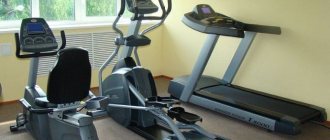What is fasted cardio?
The idea of fasted cardio is to do cardio on an empty stomach. Most often, such workouts are performed in the morning, since by this time you have not eaten for the last 6-10 hours.
Some athletes find fasted cardio easy, while others find it difficult.
In this article, we provide evidence for and against fasted cardio to help you decide whether this strategy is worth pursuing for you personally.
What Advocates of Fasted Cardio Training Are Saying
Is it possible to create any specific conditions under which fasted cardio will be effective if there is a need to achieve a low fat percentage? Jim Stoppani, a modern specialist in sports physiology, clarifies that training on an empty stomach helps fight the most stubborn layer of fat. In some people it accumulates in the abdomen or lower back, in others in the buttocks or thighs.
Fasted cardio will be extremely effective after a person has begun the process of burning fat through other workouts, but there are still those stubborn parts of the body where fat does not want to be burned. Such problematic parts of the body can be dealt with through fasted cardio training.
If an athlete has a low percentage of fat, approximately from 12% to 19%, then burning it in the future becomes a real problem. Therefore, for those who want to further reduce their fat percentage, trainers recommend fasted cardio, because this will help mobilize fatty acids, and in some cases even increase blood flow in those areas where fat most often accumulates. However, if the percentage of fat in men is above 12%, and in women 19%, then cardio training on an empty stomach will not bring any effect.
Undoubtedly, if some advantages of these trainings:
- Fasted cardio is a good option for weight loss when combined with other methods. Also an ideal option for those who just want to lose a little weight, and morning fasting does not cause a strong feeling of malaise;
- This type of exercise in the morning is an ideal method to provoke the release of endorphins into the blood. Also, such activities help improve metabolism for the whole day;
- scientists have proven that it is morning workouts that provoke a person to monitor their diet more carefully, and not allow themselves to consume excess foods that will provoke excess weight gain;
- Standard excuses about fatigue after a busy day at work or other plans for the evening that could disrupt classes will no longer help here. Of course, there is another excuse about lack of sleep, however, everyone should find incentives for themselves in training and not look for them in the words of people around them.
It is definitely worth remembering that you can train on an empty stomach only in the morning, afternoon or evening; such exercises will not bring any results. And a mandatory condition: for those who have problems with the gastrointestinal tract, be sure to consult a doctor before starting cardio training on an empty stomach.
Who can do cardio training on an empty stomach? Here experts talk about the following groups of people:
- If there are no problems with the cardiovascular system;
- When the experience of playing sports is more than 2 years;
- If a person has reached a plateau in matters of fat burning, but cannot budge;
- When various cardio workouts of other types do not bring any visible results for a long time.
Why does fasted cardio burn fat?
When you exercise, your body primarily needs carbohydrates to replenish energy. After you eat carbohydrates, glucose (the building blocks of carbohydrates) is available in your bloodstream and muscles for energy. Long and intense cardio training burns glucose and then begins to burn stored energy (muscle glycogen).
Weight loss occurs when you burn more calories than you consume. And this is the reason why most of us do cardio. However, the decision to target burning fat instead of burning carbohydrates (the body's preferred source of energy) can be difficult. The theory behind fasted cardio is to work at a less intense level, so that when glucose is not available, the body begins to break down stored fat for energy instead.1 Determining the right balance of calories to force the body to burn for fuel stored fat instead of breaking down stored glycogen or muscle can be difficult.
Fasted cardio as part of a training program
Doing cardio without breakfast is recommended in the following cases:
- upon reaching a “plateau” - a reduced rate of burning fat deposits against the backdrop of the body’s adaptation to changes in diet and exercise;
- after a complete restructuring and adaptation to a sports program that has already been used for a long time.
It is recommended to resort to “fasted” cardio on a temporary basis with certain breaks. Regular exercise will lead to the body adapting to this regime. The main thing to remember is that muscle loss is inevitable, and in some cases, depending on individual characteristics, lethargy and fatigue may occur.
What are the benefits?
1. Burns accumulated energy - fat
People usually want to try fasted cardio because they think that working out without eating first forces the metabolism to adapt. Yet, the type and intensity of exercise you perform also influences how your body decides to provide fuel for your workouts. Ideal conditions for burning fat include no newly introduced glucose into the bloodstream (you should have been without food for the last 4-8 hours) and low to moderate intensity exercise to avoid damaging or destroying muscle tissue.
2. Combines with intermittent fasting
Intermittent fasting, or eating only at specific times during the day, means that your morning workout is more likely to be done during your fasting period. There are several types of this diet, and research is being conducted to identify all of its potential benefits and side effects. Fasted cardio can easily be combined with many types of intermittent fasting.
3. You can do the workout immediately after waking up
The fact that you gain time that you would normally spend fueling your workout is the best benefit of fasted cardio. Typically, you don't start your workout until about thirty minutes after you eat, which means that if you're going to do a workout at six in the morning, you need to finish breakfast before 5:30 in the morning. However, if you do fasted cardio, you don't have to wake up earlier to make breakfast or a pre-workout snack, you don't even have to drink a protein shake - just start working out as soon as you wake up, and worry about food later.
The effectiveness of cardio on an empty stomach
Cardio exercise is, first of all, a load aimed at training the heart muscle and only then at losing weight. It can be put even more simply: losing weight is a by-product of training the heart muscle.
After a night's sleep, catabolic processes prevail in people:
- the cycle of fermentation of products in the intestines ends;
- the heart muscle is in a state of relative rest;
- the nervous connection between the central nervous system and muscles is restored;
- the cycle of synthesizing new amino acids in the body ends;
- glycogen reserves are partially depleted.
In other words, our body is completing a reboot associated with building basic functions. But all this requires energy. Since, when general metabolic processes slow down, the body has no external sources of energy, it uses its own glycogen reserves, depleting them almost to zero. At the same time, incompletely synthesized amino acids can easily perform the function of energy elements, breaking down into the simplest glucose under the slightest stress.
Cardio exercise, regardless of its type, is aimed at working specifically with glycogen reserves. If the body does not find them, it begins to burn fats. However, this does not happen immediately, but only in the complete absence of easily split energy elements.
Therefore, when a person starts running in the morning without eating beforehand, the following processes occur:
- First, the glycogen reserves accumulated by liver cells overnight are depleted.
- The breakdown of amino acids circulating through the blood into the simplest energy elements begins.
- Growth hormone is released in large quantities.
- Only after this does the breakdown of the fat layer begin.
This process has positive and negative sides. Among the advantages is the abundant release of growth hormone, which causes muscle hyperplasia, which increases their energy and strength potential in the future. The main disadvantage is that before burning fat, the body breaks down its own muscles, which are in a semi-disassembled state. This happens because from the point of view of optimization processes this is a simpler path.
If you want to lose weight, morning cardio will help you burn fat and muscle faster. But if your goal is to maintain the muscle mass you have gained, or in addition to morning cardio, you plan to do an evening training set, then morning cardio on an empty stomach is contraindicated for you.
Fasted Cardio for Fat Loss/Weight Loss
So, is fasted cardio effective for weight loss and fat burning? As with most bodybuilding exercises, this depends on a number of conditions. Although research supports the idea that most fat is burned in the digestive system without carbohydrates, getting enough energy to run or bike can still be difficult.1 If you want to push your limits or perform intense cardio exercise for long periods time, you may not be able to work efficiently because your body must focus on breaking down fat for energy. In addition, such training can lead to muscle breakdown.
If your regular cardio workouts are low to moderate intensity, then fasted cardio will only make small changes to your training routine. If you have trouble waking up early in the morning, you may still be able to fit fasted cardio into your routine. You can only do this type of workout six hours after your last meal, so you can do it between, say, lunch and a late dinner. While the food from your previous meal is being digested and absorbed, your blood glucose and insulin levels should be low enough to allow your body to use your body's fat stores.
Research has shown that regular exercise in a fasted state causes the body to become even more efficient at burning fat over time.2 Without available glucose, cells are forced to adapt to produce the energy they need. This means that when you do cardio at the right intensity, fat is burned.
Exercising on an empty stomach doesn't burn more fat
In a discussion about the results of the study, scientists indicated:
It has previously been hypothesized that fasted training encourages the body to use fat rather than carbohydrates for fuel, thereby reducing body fat to a greater extent than postprandial training. The data from our study refutes the validity of this hypothesis. Although both groups lost significant amounts of weight and fat mass, there were no differences in end results regardless of nutritional status.
Based on all the information presented above, we can come to the conclusion that for the final result in order to burn fat, it does not matter when and under what conditions we train. It all depends on the personal preferences of each person. It’s especially important to consider cardio; training after meals will not bring results if you do not follow the law of energy balance . In the end, everything will be decided by whether you spent more calories per day than you received from food .
By the way, the authors of the above study still admit that due to the relatively short period of the experiment and the small group of subjects, we cannot discount the possibility that under certain conditions, fasting training tactics may have its advantages. It is noted that in order to finally resolve the debate, it is necessary to conduct long-term studies using a larger group of subjects.
Is fasted cardio safe?
In general, low- to moderate-intensity workouts on an empty stomach are safe for most people. The exception is if there are problems with blood sugar control that may make it unsafe to exercise without first eating or snacking.1 Most exercise programs include “active recovery,” or cardio days with moderately light exercise. Such programs provide a good opportunity to try fasted cardio.
However, if you are planning to do high-intensity interval training or training rides or long-distance swims, then it is best to schedule them at a time when you are properly fueled. Intense workouts like the ones above, in addition to consuming high-calorie foods before training, often require additional nutrition during training. Long-term cardio exercise puts your muscles through so much stress that they require both readily available glucose (carbohydrates) and stored energy (in the form of glycogen), which you can get by eating right in the days and weeks before exercise.
Research has shown that proper pre-workout nutrition is a key factor in achieving peak performance in powerlifting and other high-intensity, short-term exercise.1 If you exceed the recommended low-intensity limits (about 50-60% of your target heart rate) while doing fasted cardio ), you run the risk of destroying muscle instead of fat during training. In addition, you simply will not be able to conduct a quality workout.
To have breakfast or not after fasted cardio
A common mistake made by those practicing this type of training is to completely skip the morning meal. Many people believe that if you don't eat before lunch, the effect you get from fasted cardio will increase. This approach is fundamentally wrong.
The lack of food in the first half of the day serves as a signal to the body for an upcoming hunger strike. It triggers the mechanism of fat accumulation. Consequently, muscle mass is lost, and the energy received from subsequent meals is instantly deposited in the fat layer.
A carbohydrate breakfast after cardio training allows you to avoid this. This type of eating not only blocks the fat storage program, but also significantly reduces the loss of muscle mass. But even taking such measures, you should not perceive this type of physical activity as a full-fledged fat burning training.
To start the process of burning fat, it is not enough just to do cardio training, you also need to reduce the number of calories you consume. If the calorie content of the daily diet remains high, even the most intense workouts will not be able to compensate for the excess energy entering the body with food, and the result will be practically zero.
Is fasted cardio right for me?
So when might you decide you want to try fasted cardio? When you're struggling to make changes in your body composition or just can't seem to get rid of those last few stubborn pounds, this workout might be a good option to try. Low- to moderate-intensity cardio that you incorporate into your regular workout schedule can provide the boost you need to achieve some results. As with any workout, monitor how you feel during and after exercise so you can adapt and find the option that works best for you.
For cardio on an empty stomach, the best solution is to do light workouts that slightly increase your heart rate. Good options include elliptical training, yoga, Pilates, gentle cycling or light jogging. Higher intensity workouts get your heart rate up and put you in a state where you don't burn fat. They can also make you feel dizzy or weak because you haven't energized yourself first.
Who should not exercise on an empty stomach? Those who have problems with blood sugar levels (for example, diabetes or hypoglycemia) or those who, due to the presence of any disease, must immediately eat something as soon as they wake up in the morning. Such people should always consult a doctor before starting morning cardio on an empty stomach.
If you don't eat for some time during the day after your morning workout, you may overeat in the evening, ruining all your efforts. Some studies have shown that subjects did not achieve the desired results for this very reason. The correct timing of meals and the choice of foods for post-workout reinforcement will help solve the problem. Choose foods high in protein and fiber to satisfy your hunger and keep you feeling full longer.
Often, if we don't get carbohydrates into our bodies while burning fat for energy, we can experience overwhelming cravings for high-calorie foods, so choose your post-workout snacks carefully (and quickly) and ensure you're eating well-balanced meals for the rest of the day. Make sure to include plenty of protein in your diet in case your muscles are overly tense during fasted cardio.
Review by Researcher Schoenfeld
In 2011, an expert presented an in-depth review in the Strength and Conditioning Journal entitled, “Does Fasted Cardio Really Maximize Fat Burning.”
At the beginning of his work, the scientist emphasized that considering burning fat, which is used as a source of energy only during training, is a short-sighted strategy. The human body is a dynamic system that constantly adapts and regulates the proportion of fat and carbohydrates used as an energy source. This regulation occurs due to the production of hormones, activation of enzymes and other factors that can change at any time. Typically, if you burn more fat during exercise, your body will use more carbohydrates as an energy source during the rest period, and vice versa.
Thus, fat burning should not be considered in a short training period (hour to hour), but in the long term. This is the only way a person will be able to notice significant changes in body composition.
Scientist Horowitz compared how fat was burned in people with average training experience during training at different intensities. During the experiment, participants pedaled an exercise bike at different intensities over 4 training sessions. During the first two workouts, subjects consumed carbohydrates with a high glycemic index at the 30th, 60th and 90th minutes, while:
o The first workout was performed at 25% of maximal oxygen consumption (low intensity).
o The second – at the level of 65% of the MOC (moderate intensity).
During the remaining two workouts, the subjects trained at the same intensity, but on an empty stomach and without eating during the workout itself.
The results found that during low-intensity, carbohydrate-consuming exercise, fat breakdown, or lipolysis (in which fat cells release fatty acids but fat is not burned yet), was reduced by 22% compared to fasted exercise.
However, until the workout passed the 80-90 minute mark, fat oxidation (burning itself) was the same both during fasted training and during training with carbohydrate consumption.
However, during moderate-intensity training, regardless of whether carbohydrates were consumed or training was on an empty stomach, the rate of fat oxidation was the same even after the subjects crossed the training mark of an hour and a half. And this is despite a 20-25% decrease in the lipolysis process and an increase in the concentration of free fatty acids (fatty acids that are ready for oxidation) in the blood.
Another study assessed how consuming carbohydrates before and during exercise affected fat burning.
In a randomized study using a crossover design and a blinded design, 7 endurance athletes pedaled a stationary bicycle for 120 minutes at 63% of maximum power output, followed by a training cycle in which subjects pedaled as fast as possible. As in the study above, participants trained at varying intensities over 4 training sessions.
- In the first training session, subjects received a placebo before and during training.
2. On the second - placebo 30 minutes before training and carbohydrates every 15 minutes before the end.
3. On the third - carbohydrates 30 minutes before and placebo during training.
4. On the fourth - carbohydrates before and every 15 minutes during training.
Result: There is no evidence that consuming carbohydrates before or during exercise interferes with fat oxidation.
Schoenfeld points out that these two studies show that during fasted moderate- and high-intensity cardio, significantly more fat is broken down than oxidized. At the same time, fatty acids that have not undergone the oxidation process are converted back into adipose tissue, as a result of which the increased lipolytic effect (fat breakdown) that fasting training provides is negated.
In simple terms, during fasted training, our body does not fully utilize the fat released from fat cells in a free form for burning, since the concentration of fat in the blood exceeds the body's ability to use it as an energy source.
Why is fat deposited in our body?
After you've had lunch and gone about your business, a complex chemical process begins in your body. The body, which has received energy from the outside with food, begins to convert it into the energy necessary to maintain its vital functions.
Part of the energy is glycogen - will be sent to the muscles and liver. Glycogen stored in the liver provides the body with glucose. And glycogen, which is stored in muscles, is needed for physical activity. Since glycogen can accumulate in the liver and muscles in rather limited quantities, its excess is transformed into fat and sent to the so-called fat depot. This will already be a strategic reserve, which is not so easy to obtain: the body resorts to it only when the glycogen reserve is depleted.
If you haven’t moved much during the day and haven’t used up your glycogen reserves, your body will convert it into fatty tissue and store it until better times.
Be sure to read: The ability to quickly and easily lose weight using the Fukutsuji method
Nowadays, when supermarket shelves are replete with food products whose energy value is tens of times higher than the natural needs of the body, gaining excess weight is not difficult. High-carbohydrate foods such as buns, chocolate, pies, sweets, cakes in just one serving can contain the body's daily need for carbohydrates. And all this goes straight to the fat depot: this is the peculiarity of “fast” carbohydrates. But once you make adjustments to your diet, replacing “fast” carbohydrates with “slow” ones (porridge, pasta made from durum wheat, bread made from whole grain flour), the body will begin to rationally distribute the calories received. Of course, you can gain weight with proper nutrition. But here the amount of food eaten will matter.
So, we learned that the body uses glycogen throughout the day. By leading a sedentary or office lifestyle, you are unlikely to ensure that it reaches fat reserves and begins to use them up.
In order to start burning fat, we need to engage in aerobic training. Aerobic or cardio training is a type of physical activity in which oxygen plays a major role. It is oxygen that will start the process of breaking down fat into energy and water, and this is exactly what we strive for!
Jogging in the fresh air, cycling uphill, water aerobics, play sports, dancing - all of this refers to aerobic exercise that is best suited for those who want to lose weight and get rid of subcutaneous fat deposits.
Cardio on an empty stomach in the morning, before breakfast, significantly increases the effectiveness of weight loss. The fact is that while you were resting at night, glycogen reserves were used up to maintain the basic needs of the body. This is why, as a rule, we feel hungry in the morning: we need to replenish quick energy and begin our daily activities.
If you go for a morning run or do a 40-minute fitness workout instead of breakfast, your body will be forced to use fat as energy.
Benefits of Cardio on an Empty Stomach
Despite the fact that there is no evidence of the high effectiveness of such training yet, they still have a number of advantages:
- You spend less time training
Doing cardio after eating primarily uses up muscle glycogen. Fat deposits, as an alternative source of energy, are connected later (after 20-30 minutes). By exercising on an empty stomach, you save time by reducing the duration of your workout.
In other words, a workout on an empty stomach lasting 20 minutes will be equal in terms of fat burning to a regular workout of 40-50 minutes.
- By doing morning cardio on an empty stomach, you avoid wasting time eating before activity.
Usually, before training, you need to eat in advance, at least 30 minutes. In this case, there are no problems. You can start training almost immediately after waking up by simply drinking a glass of water and doing a light warm-up.
- Fasted cardio helps burn fat in the most stubborn areas.
Some experts, such as Jim Stoppani (PhD in Sports Physiology) and Lyle MacDonald (renowned fitness expert and nutritionist) argue in their materials on this topic that cardio on an empty stomach helps burn fat in “problem” areas .
According to their observations, this technique can work when the overall percentage of body fat is already quite low (12% in men and 19% in women) and does not move forward due to adaptation of the body systems.
However, we note that this is just a theory for now.











